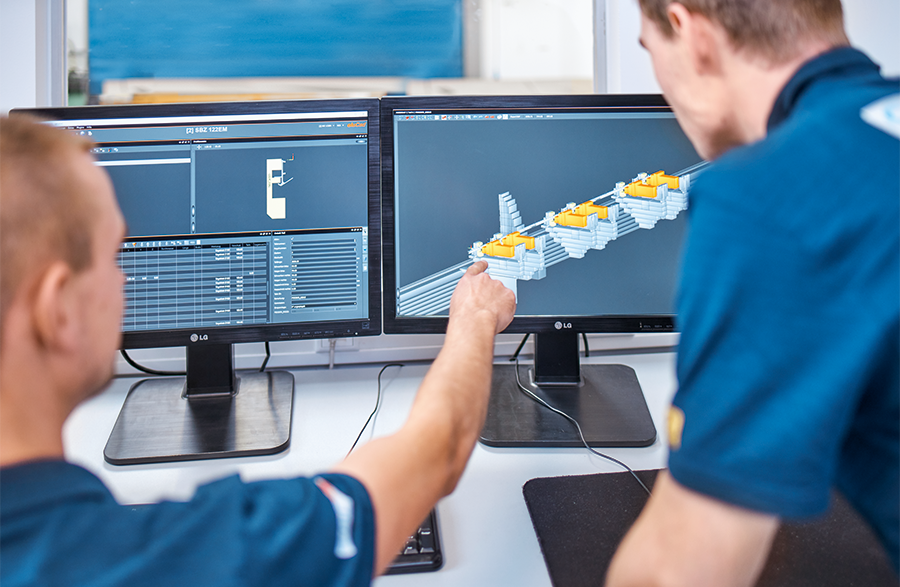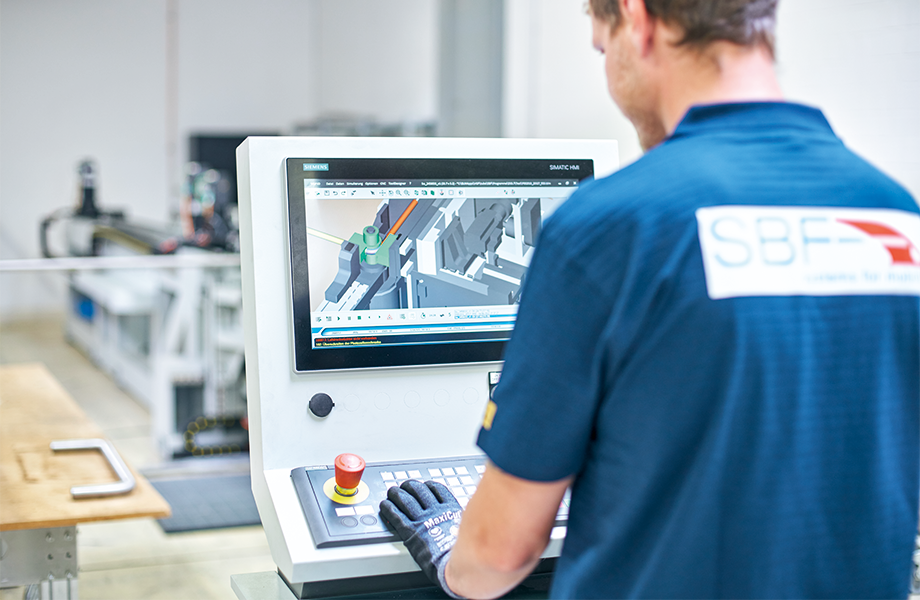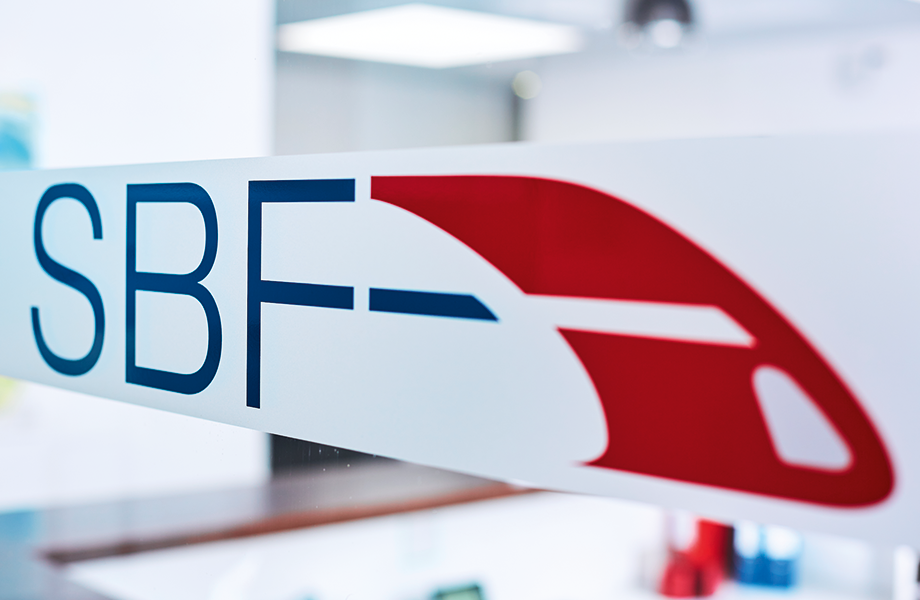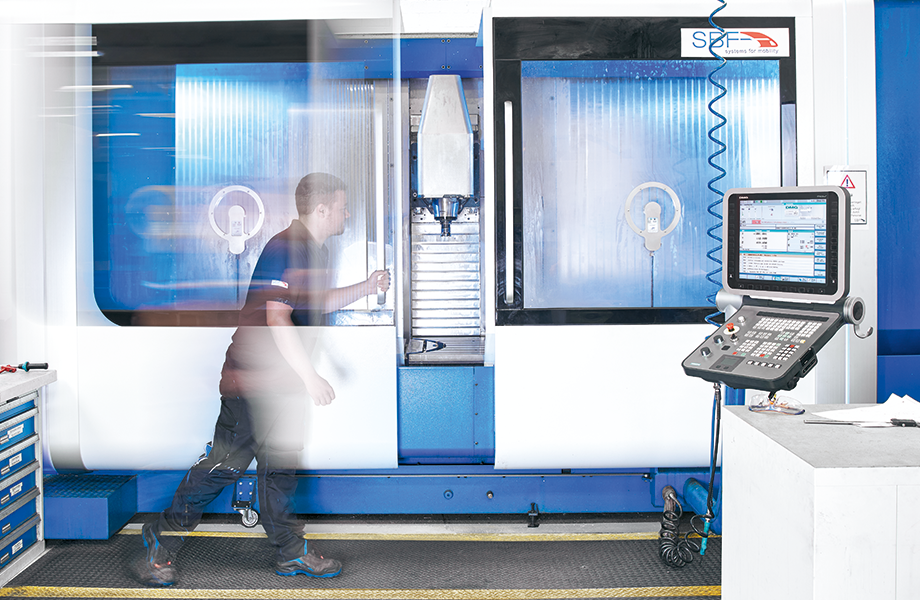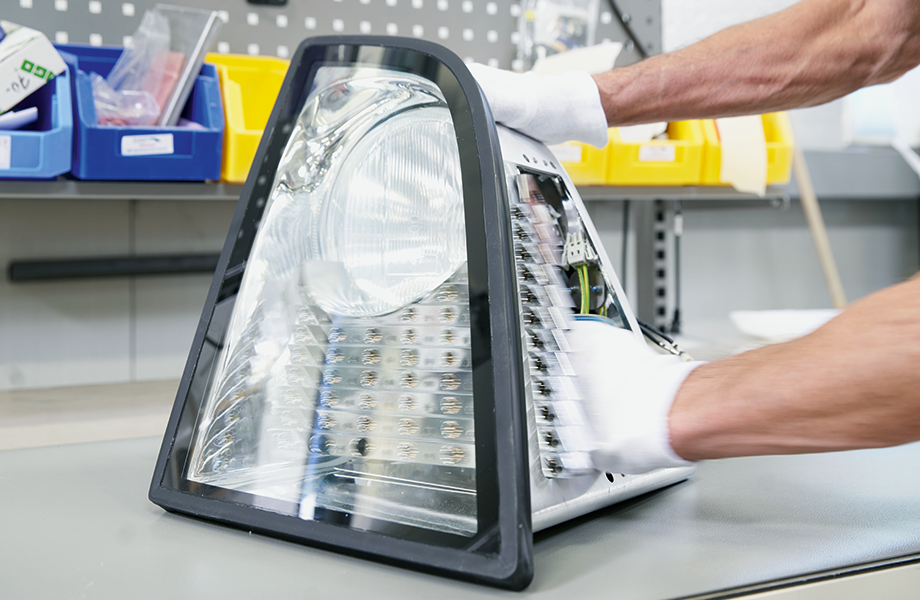Text Ralf Steck, Birgit Hagelschuer ––– Photography
When you hear of a company with a name as venerable as “Sächsische Bronzewarenfabrik” (Saxon bronzeware factory), state-of-the-art LED lighting technology products might not be the first thing to come to mind. But over the course of its history, which stretches back for more than 150 years, SBF has repeatedly reinvented itself and succeeded in keeping pace with – or even outpacing – technology. This was the case in 2014, for example, when Stefan Büttner joined SBF.
NEW – BUT A SEAMLESS TRANSITION
„At that time, a new development environment was just being rolled out, which consisted of the Autodesk Inventor CAD system and Autodesk Vault for the associated product data management,” recalls Büttner, who is now Head of Design Engineering and CAD at SBF. As part of the rollout, analysis was also conducted to establish whether the functions of the existing customised programming by SBF could be covered by newly developed, near-standardised and fully standardised Cideon tools. To simplify future updates, Cideon Vault Toolbox was also introduced. Finally, in 2020, SBF placed an order with Cideon to completely modernise its development environment.
„Cideon built the new environment on a test server provided by our IT department. The new software ran quickly, and once the final glitches had been ironed out, the new environment was rolled out on every workstation,” Büttner explains. The entire system switchover was completed in a single weekend – come Monday morning, employees were able to seamlessly continue work on their new workstations. Any remaining questions were answered in an update training session that Cideon ran. “It all went without a single hitch,” Büttner recalls.
CUSTOMER DATA CONSIDERED, TOO
Inventor 2021 gave the design engineers access to new features that have turned out to be very useful in their day-to-day work. For example, they can now input the STEP data that is often supplied by customers and use it as a basis for further design work. Inventor now also enables design engineers to separate out individual models from STEP assemblies and import them into their own models, which simplifies subsequent work on customer geometries. Further optimisations have also been made to product data management in Autodesk Vault.
In addition to using the Inventor Professional CAD system, the design engineers at SBF utilise the Inventor Studio rendering add-in to create customer presentations. Inventor Nastran is also used for FEM simulation when the strength of components needs to be analysed. There is also a special feature to product data management in Vault – the CAD models and the neutral formats derived from them are used consistently throughout the production planning, work preparation, procurement and sales stages.
BIM-COMPLIANT DATA
In parallel with the CAD/PDM update at SBF, Cideon rolled out a Building Information Modelling (BIM) environment at LUNUX Lighting GmbH, which is a subsidiary of SBF. LUNUX develops and produces professional LED exterior and interior lights for towns and cities, private developers, industry, shops, offices, logistics and railway transport. Nowadays, customers such as Deutsche Bahn particularly need BIM-compliant data – in other words, data that can be used directly in digital building models.
This data contains far more than just a 3D CAD model – it also includes lots of additional information, from costs and operating technology features through to function descriptions that are relevant to operations. For instance, the data for a railway platform light can include both the light beam data and the electrical connected load values.
These values can then be used in the digital building model for planning purposes. Autodesk offers a range of solutions for BIM, including Revit software, which is now more or less regarded as a standard in digital building planning.
DETAILS AND DATA SIZES
Kay Rethmeier, Principal Consultant at Cideon, describes the BIM4 Customer workshop at LUNUX: “Everybody was really interested in the topic, and we achieved some important results. First, the models are prepared in Inventor. During this process, it’s important to reduce the CAD data, because a BIM file contains multiple CAD models with different levels of detail that are used according to the planning stage in question.” As Rethmeier also explains, the amount of data in detailed models should always be kept to a minimum: “To ensure the complete model stays manageable, the component models must be kept as small as possible, too.”
This requirement proved challenging. Lamp heads, for example, are designed as cast parts, and their CAD models are relatively large. At the workshop, LUNUX and Cideon came up with solutions to address this issue and created the relevant IFC files that architects, engineers and BIM managers will be able to use when planning railway stations for example. Büttner is full of praise for the collaboration. “At SBF and LUNUX alike, we’re absolutely delighted with Cideon. The updates were completed without a hitch, and both the collaboration with our IT department and the BIM rollout itself couldn’t have gone more smoothly.”
